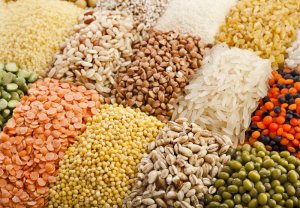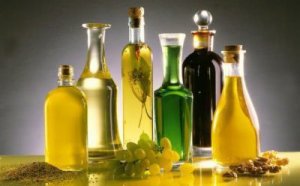Features of the potassium diet for heart health and 10 products included in its composition
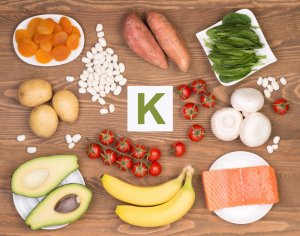 A low-calorie diet with a high potassium content (diet No. 10) has long been studied and tested in cardiology. It is one of the few considered to be practically universal: suitable for people of different ages and with different health conditions.
A low-calorie diet with a high potassium content (diet No. 10) has long been studied and tested in cardiology. It is one of the few considered to be practically universal: suitable for people of different ages and with different health conditions.
The potassium diet is aimed at strengthening the heart and blood vessels, preventing hypertension and improving the functioning of the circulatory system as a whole.
This diet also helps in the fight against excess weight and with the general improvement of the body.
Content
- Who is shown diet number 10
- What are the contraindications
- Rules and principles of compliance
- 10 types of foods that should be present in the diet
- What needs to be excluded
- Sample menu for a few days
- Features of the diet for a child
- Features for pregnant women
- Is a potassium-magnesium diet better?
- Related videos
- Conclusion
Who is shown diet number 10
Nutrition aimed at enhanced replenishment of potassium reserves in the body is useful for almost everyone, even just as a preventive measure. But first of all, it is prescribed to people as a supportive and additional health-normalizing remedy for the following problems:
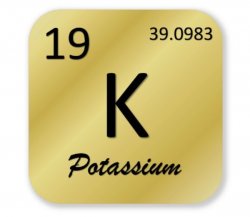
- Serious cardiovascular diseases;
- With a tendency to hypertension and the need to prevent an increase in blood pressure while taking medications;
- If necessary, lose excess weight with minimal side effects of the body;
- For those who have kidney problems;
- To remove excess fluid from the body and relieve swelling;
- If necessary, quickly and painlessly lose a few pounds of excess weight;
- To facilitate the general condition and preparation for surgical interventions, etc.
See also:
TOP 10 fruits and vegetables that are good for the cardiovascular system
What are the contraindications
There are very few contraindications for this diet, which also speaks in its favor. In addition to improving health and improving overall health and normalizing the work of many body systems, a hypocholesterolemic diet can not bring anything to the body.
But when prescribing this food, doctors usually make literally a few reservations.
- It is necessary to stick to a diet for no more than 7-10 days, because firstly, this time is quite enough to remove excess salt and enrich the body with useful trace elements; and secondly, like any, albeit beneficial, restriction, it is characterized by some imbalance, so it includes little meat and a lot of potatoes, which is not useful in large quantities for a long time.
- Children and pregnant women need to adjust this type of diet towards the exclusion of fast food, fatty and smoked foods, rather than towards restrictions in protein products, since animal protein is not only more necessary for the growing body of a child and a pregnant woman than for other people, but also simply vital.
- Do not forget about contraindications. It is not recommended for those who have endocrine diseases and impaired metabolic processes. A strict diet is especially contraindicated.
Rules and principles of compliance
Like any dietary restriction, to get the expected effect, diet No. 10 requires rigor in following a number of rules. They require discipline and care, but not extra time or effort.

- Fractional power supply. The entire daily diet should be divided into five to six meals and strictly adhere to the schedule: fractional and timely nutrition is one of the banal, but very well-working principles of this diet.
- Limit salt intake. Throughout the day, when cooking absolutely all dishes, you need to use only 5 grams of salt (one teaspoon). If you follow a completely salt-free diet, it won't get any worse either.
- Drink more fluids. The required amount of liquid consumed per day is at least one and a half liters. It's good if it's clean drinking water.
- It is undesirable to fry anything , it is better to &8212; cook and stew.
- Drink decoctions. When cooking any vegetables, it is better to use them ready-made together with decoctions (or stew), because when boiled in water, potassium comes out into a decoction.
- Follow the steps. The diet is uneven throughout its entire course, it consists of four stages that you need to know about and make a menu according to them.
Strict adherence to such simple principles gives a quick and reliable effect, which is noticeable even after the first day of the diet.
10 types of foods that should be present in the diet
When switching to the 7-10-day menu, it is necessary to study the list of acceptable and unacceptable foods.
Recommended foods are classified as healthy and do not require much time to prepare: the simpler the dishes from them, the better and faster the result of dieting will be noticeable.

- Low-fat sea fish and some meat (meat is not necessary: you can limit yourself to fish, except for the children's menu and nutrition for pregnant women!).
- Potatoes8212; one of the main products of this diet, as it contains a lot of potassium.
- Legumes (peas, chickpeas, beans, lentils), rich not only in potassium, but also in vegetable proteins that compensate for the lack of animal protein.
- Sea cabbage is desirable because, in addition to potassium, it contains a number of other useful substances, including iodine, which is necessary for normal metabolic processes, and to avoid fatigue, which may occur if a low-calorie and low-protein diet is followed.
- Low-fat dairy products will improve digestion, which may be difficult due to the high content of potatoes.
- Dried fruits are also necessary for the heart , and first of all required dried apricots , raisins and prunes, as they saturate the body with the necessary substances contained in them in concentrated form.
- Any nuts 8212; a storehouse of minerals and vitamins, as well as a source of vegetable protein.
- Fruits necessary for the heart and berries : Apples, bananas , pears, persimmon , garnet , grapes , kalina , cranberries .
- Lettuce, mustard, basil not only diversify the taste of cooked low-calorie dishes, but also saturate the body with useful trace elements, make the diet more complete.
- Rosehip and herbal teas have an additional diuretic effect and enrich the diet.
Also check out the infographic:

You will find more products containing potassium and magnesium in this article
What needs to be excluded
Most of the products that are subject to restriction at age 10 are absolutely not useful for the body and can be excluded without regret. Some are useful, but you will have to limit their use for several days.
- Any fast food has no value other than energy, but it contains a lot of carcinogens and chemical compounds that have nothing to do with a normal diet.
- Semi-finished products of factory production (homemade frozen food is quite acceptable for convenience of subsequent cooking) are rarely made from high-quality products. In addition, despite the composition indicated on the labels, it often contains additional components such as preservatives, stabilizers, flavorings and flavor enhancers that are unambiguously harmful to health, including the cardiovascular system.
- Carbonated store-bought lemonades and alcohol will negate all the advantages of a potassium diet if they are not excluded from the diet for the required period of time.
- Fatty, canned and smoked foods even homemade preparations should be temporarily excluded, as they contribute to fluid retention in the body and prevent the absorption of potassium.
- Coffee and green tea , for all their advantages, are also not included in diet No. 10.

While following a hypocholesterol diet, you should also limit healthy, but fiber-rich foods:
- White cabbage and carrots;
- Onion, corn, white bread;
- Bran, flax seeds, etc .
Sample menu for several days
Depending on the duration of diet No. 10, the entire diet is divided into 4 stages: the first two consist of 1-2 days, the third and fourth of 3-4 days each.
On Internet resources, you can find clearly written diets of this diet and choose the one you like the most. You can choose, for example, this one (items need to be linked to certain hours of the day and adhere to the regime).
Any day of the first stage.
This is the easiest period in terms of calories and complexity of dishes.

- 1-2 potatoes baked in foil, herbal tea with low-fat milk.
- Half a cup of freshly squeezed fruit juice, you can even add water to taste well.
- Vegetable soup puree, allowed fruit of choice.
- A plate of mashed potatoes, dried fruit compote without added sugar.
- Rosehip infusion.
- Half a cup of vegetable juice.
Any day of the second stage.
He brings some variety to the diet. It is easier to transfer it than the first stage.

- Two potatoes baked with peel, weak black tea with low-fat milk.
- A plate of porridge made from wheat or buckwheat, a glass of fruit (not store-bought, but freshly squeezed!) juice diluted with water.
- Potato soup and a small amount of other vegetables, one potato baked with the peel, baked apple or jelly based on agar-agar.
- Dried fruit compote.
- Fruit pilaf with raisins, half a cup of rosehip tea.
- A glass of vegetable juice.
Any day of the third stage.
Nutrition these days is already close to the usual menu, but remains low-calorie and easy to digest.
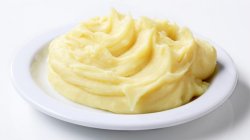
- A plate of millet porridge with low-fat milk in half with water, several soaked dried fruits.
- Mashed potatoes, a glass of freshly squeezed juice.
- Vegetable soup with the addition of cereals, vegetable patty, dried fruit compote.
- Half a cup of rosehip broth.
- Mashed potatoes, steamed fish patty or meatballs.
- Juice from vegetables or fruits.
Any day of the fourth stage.
This is the final period, almost a full-fledged healthy menu. Following a diet at this stage is not difficult at all.
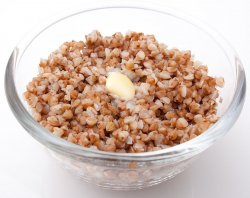
- A plate of buckwheat porridge boiled in water with milk, vegetable salad, black tea.
- Several pieces of soaked dried apricots and prunes, a glass of freshly squeezed vegetable juice.
- Vegetable soup, rice, lean meat, compote.
- Baked apples.
- Potatoes, lean meat or a lean piece of chicken, dried apricots, prunes and raisins compote.
- A glass of vegetable juice.
Features of the diet for a child
The growing body of a child of any age needs animal proteins and other trace elements, in addition to potassium, in increased amounts.
Therefore, the potassium diet for children has some nuances.
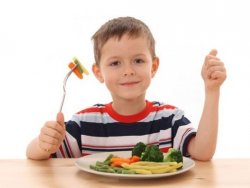
- Low-fat meat should be on the children's menu every day: beef, rabbit, lean pieces of chicken.
- To diversify the table and improve the taste of food, fish and meat can not only be boiled, but also baked.
- Soups can be lightly salted.
- Salads must be added greens and it is not forbidden to fill them with unrefined vegetable oils.
- Children should be given more homemade compotes, uzvar and simply steamed dried fruits. It is good to introduce a little honey into the diet in the absence of allergies to bee products.
- As protein products, it is necessary to add more milk and dairy products: cottage cheese, homemade yogurt without sugar (you can add dried fruits and sweeten the finished product with honey a little), yogurt.
- Cereals should appear in the children's menu more often than in adults: oatmeal, buckwheat, pearl barley, millet, from which you can not only cook porridge, but also cook vegetable soups with them and cook casseroles with dried fruits and cottage cheese, which will be extremely useful for the child's heart.
- The children's table can be more varied with fruit jelly based on agar-agar.
Features for pregnant women
The potassium menu for pregnant women is close to the children's menu. But non-compliance with its nuances, even for 10 days, is more dangerous than in the case of children due to the fact that intrauterine fetal development occurs even more intensively than the growth of the child. A pregnant woman is obliged to receive more protein food than an ordinary adult, also because:

- With a lack of protein, intrauterine pathologies can begin to develop rapidly that may be difficult to overcome afterwards;
- Protein is responsible for the formation of human immunity;
- Lack of protein in the blood threatens oxygen starvation throughout the child's developing body;
- Protein transports minerals to all organs, so if there is a shortage of it, the body of the mother and child will suffer from a lack of many useful substances at once.
It is also necessary to add to the potassium menu of pregnant women:
- Oily sea fish , rich in fatty acids (mackerel, herring, tuna): this will have a beneficial effect not only on the development of the baby, but also on the successful outcome of childbirth and prevent postpartum depression later;
- Unrefined vegetable oils , which, like fish, are rich in Omega-3 and Omega-6 fatty amino acids (olive, corn, cedar, sunflower, soy, etc.);
- Seafood required, but in small portions: to avoid provoking allergies;
- Slightly more fiber (there is a lot of it in pumpkin, string beans, cabbage, avocado) it is necessary for the normal functioning of the digestive system, which is often disrupted during pregnancy, especially in late pregnancy.
Is a potassium-magnesium diet better?
A diet with an emphasis not only on potassium, but also on magnesium and sodium is even more suitable for cores. But it is more severe and is indicated for the treatment or prevention of:
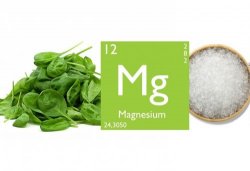
- Hypertension;
- Atherosclerosis;
- Cholelithiasis (but not with its exacerbation).
The magnesium component implies compliance with a number of other rules, unlike the potassium diet.
- It is necessary to completely abandon salt during the diet.
- The amount of liquid consumed should be reduced to a physiological minimum.
- Meat and fish broths will have to be excluded from the diet.
Otherwise, the potassium-magnesium diet does not differ from the potassium diet and is very useful as a short-term way of improving the body.
Related videos
Also check out the video below:
Conclusion
Almost any diet does not always have a beneficial effect on all body systems. More often than not, on the contrary: giving some kind of positive effect (for example, in the form of getting rid of excess weight), it is harmful in something else.
Diet No. 10 is the rarest exception in this regard, although it is prescribed for a limited period of time. A well-applied potassium diet helps to improve not only the cardiovascular system, but also to strengthen overall health.


